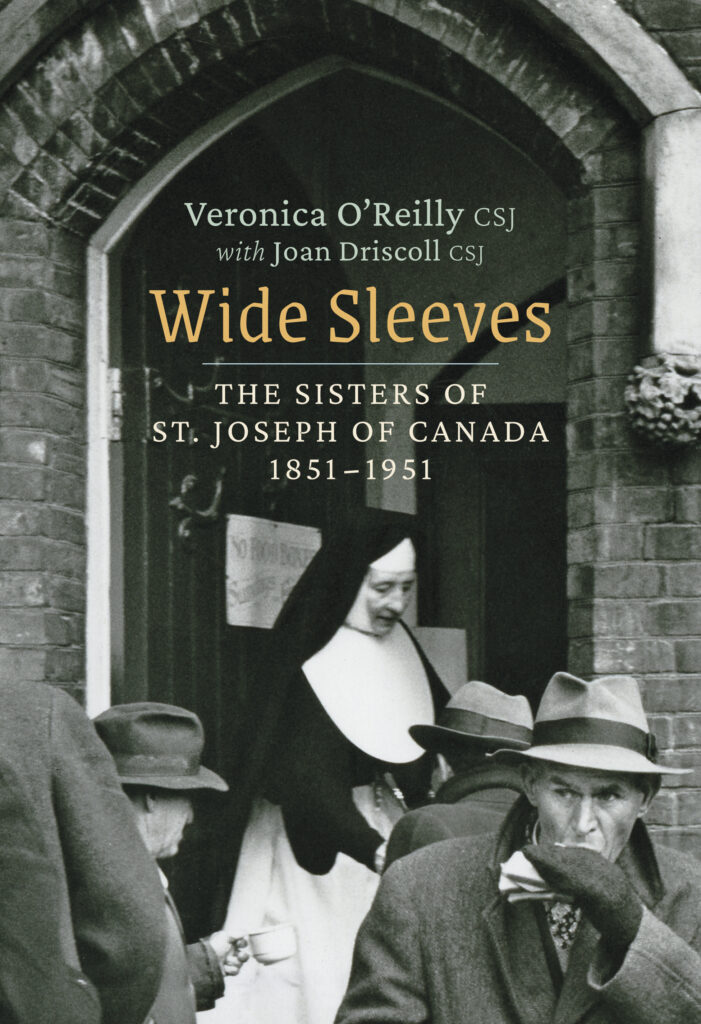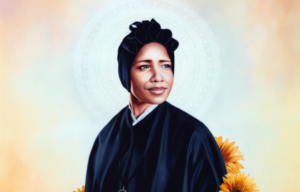
BOOK REVIEW: WIDE SLEEVES

The contributions of legions of contributors to the history of Canada have long been acknowledged: explorers, fur traders, loggers, farmers, capitalists and politicians have all had their lives and exploits detailed in countless stories. Even indigenous Canadians are beginning to have their role recognized.
But there is an entire army of people who helped create the essential building blocks of our society who have been almost invisible. These are the men and women religious who came to this country to start and run the schools, hospitals, orphanages and other institutions to help the poor that became the foundation for Canada’s social safety net. In particular, the role of women religious has been one of the more obscure corners in the study of Canadian history.
The fruits of their labour remain with us today in the hospitals, etc. named after their founders or patron saints. Alas, much of evidence of the religious inspiration that led to their creation has long been expunged. Their reputation has also been irreparably marred by the long tragedy of the history of residential schools in Canada, with repercussions we are still dealing with today. Still, it is impossible to deny that much of Canada’s educational and health-care systems would be significantly diminished if not for the work of religious congregations.
Into this breach comes a new history that will go some way to restore our knowledge and understanding of the many thousands of Catholic women who helped give this country its reputation for being a compassionate nation. Wide Sleeves: The Sisters of St. Joseph of Canada 1851-1951, published last fall by Novalis, offers a detailed and sympathetic chronicle of the nation-building activities of one of the best known, at least in English Canada, of the many religious communities that settled here.
The book is the result of years of painstaking research and writing, first by Sr. Veronica O’Reilly, CSJ, a scholar and educator who died in 2019, then by fellow educator and Sister of St. Joseph Joan Driscoll, who took up where O’Reilly left off. It is, as would be expected, an institutional history, full of names, dates and details, the first 100 years of the comings and goings of the sisters in Canada, written by two people who understand and have lived the charism of the congregation.
The story starts in 17th century France, in the town of Le Puy-en-Velay, where six women bound themselves together with religious vows and a deep desire to care for the ill and teach the poor. Under the spiritual guidance of Jesuit priest Jean-Pierre Médaille, they charted a path different from the usual cloistered life of vowed female religious to live a life of communal prayer and work more fully in their communities.
The fledgling community survived, growing from its Reformation roots, dodging ecclesial obstacles, religious prejudice and the even larger threat of the French Revolution to become a popular and well-entrenched congregation. Then, in 1836, a group of six sisters crossed the Atlantic to establish a community in the American Midwest. In Carondelet, Missouri, three of them settled into a pattern of work and community that would become the roots for expansion into Canada. In 1851, Antoinette Fontbonne — Sr. Mary Delphine — came to Toronto at the invitation of then Bishop Armand Charbonnel along with three colleagues.
The work was hard and the living was often precarious, even dangerous, as the sisters found themselves nursing seriously ill and dying immigrants. But the sisters and their mission found themselves in great demand throughout the frontier British colony. More importantly, they attracted many passionate, intelligent and tough single women who flocked to their communities and religious life. By the 1950s, they numbered about 3,000 women and their schools, hospitals, orphanages and houses for the destitute and aged, often named after their patron St. Joseph, were landmarks in many Ontario communities.
Over the decades the “CSJs” were invited to many other dioceses and eventually established six autonomous congregations — Toronto, Hamilton, London, Peterborough, Pembroke and Sault Ste. Marie — along with a number of other missions in western Canada and Quebec. In each place, they focused on three areas of service: education, health care and what we would today call social services. Often, they did all three at the same time. And they also served in parish life, handling many of the chores of a busy parish in collaboration with the pastor.
Not all their work was successful (some missions failed completely), and the congregation was not immune from the other failings of the Catholic Church. Though the sisters did teach indigenous Canadians, it was mostly at schools also attended by the descendants of Europeans. The book contains an appendix to discuss their one brush with the infamous residential schools, through a day/boarding school on the Kaministiquia reserve near Thunder Bay, Ontario. Though the government of Canada included it as a residential school, its population was only half indigenous. Today, many sisters find themselves working in partnership with indigenous communities, especially on projects related to the environment.
Like with so many other Catholic institutions, the 1960s posed a devastating challenge. The Second Vatican Council (1962-65), amid other social changes, wreaked upheaval in religious life. The CSJs found themselves questioning all their history and traditions. Other secular vocational paths opened up to single women, causing a drastic contraction in the number of new vocations. In 2012, four of the original congregations joined into a single body to better share resources. Meanwhile other paths opened — the call of solidarity with the oppressed and poor throughout the world beckoned the sisters to new ways to serve.
The second hundred years of the Sisters of St. Joseph is more than half over. Still, the Sisters remain true to their charism and look to God to show them new paths.
Joseph Sinasac is the recently retired Publishing Director of Novalis Publishing. He has been involved with religious communications for almost 45 years as an author, journalist, editor and TV and radio commentator on all things Catholic.



This review strikes me as hastily or carelessly written. I see three or four grammar or usage mistakes in the following paragraph. As a publisher, you might want an editor. I might be available… Beth Porter
“…Like with so many other Catholic institutions, the 1960s posed a devastating challenge. The Second Vatican Council (1962-65), amid other social changes, wreaked upheaval in religious life. The CSJs found themselves questioning all their history and traditions. Other secular vocational paths opened up to single women, causing a drastic contraction in the number of new vocations.”